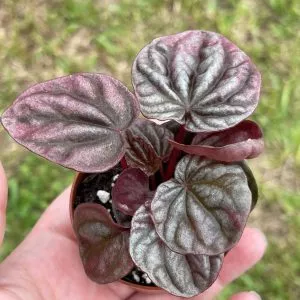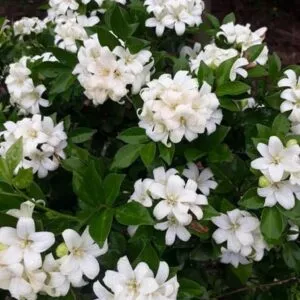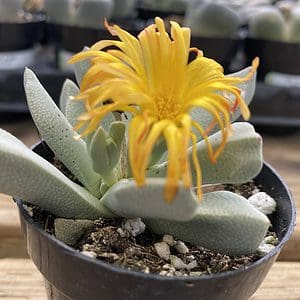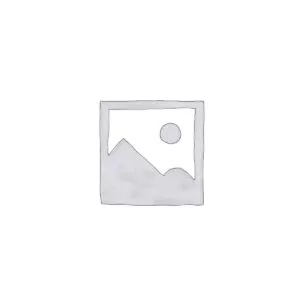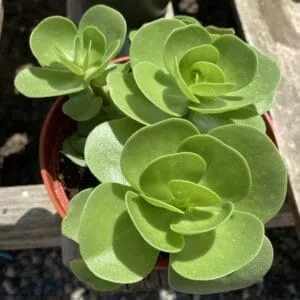No products in the cart.
A popular ornamental tree, the Yoshino cherry tree is definitely a head-turner due to its almond-scented and whitish-pink blossoms that set on stunning bare branches. With their over-the-top flowers, they are a staple of the National Cherry Blossom Festival.
According to the National Park Service, the planting of cherry trees in Washington DC originated in 1912 signifying friendship between the People of the United States and the People of Japan.
Even if its small berries were too bitter to consume, their benefit is attributed to their attractiveness to birds and butterflies which are fine pollinators in any garden. Add to their beauty, Yoshino trees have a unique and seemingly exotic growth habit.
They are also heat tolerant and are therefore suitable for warmer regions.
PLANT NAME: Prunus × yedoensis
Other Name: Japanese Cherry Tree
Plant Type: Flowering tree; Deciduous
Native Areas: Japan
Light Requirement: Full sun exposure
Watering: Weekly watering (once every two weeks once established)
Fertilizer: Small feeder, use an all-purpose fertilizer
Toxicity: Mildly toxic to pets and humans
Temperature: 35 °C -12 °C (95 °F 10- °F)
Propagation: Air layering, Cuttings, Grafting
Growth: 30 ft. tall and 40 ft. wide
Soil Type: Average moisture level, well-draining, slightly acidic soil
More About Yoshino Cherry Tree
Interestingly, the Yoshino cherry trees are said to be among the earliest to bloom. Its pendulous growth habit is a lovely sight to behold! This is in addition to its fragrant flowers and graceful set of glossy dark green leaves.
A hybrid between Prunus speciosa and Prunus subhirtella var. ascendens, Yoshino cherry tree blooms between March and April for about two to three weeks. They usually develop into 5 to 6 clusters. Each blossom is characterized by five petals that open into pale pink blossoms and later on mature into masses of white pink flowers.
Yoshino cherry tree grows 30-50 feet tall and spreads at about 25-40 feet. In the summer, the green foliage develops which later turns to yellow-orange to red in the fall.
Yoshino Cherry Tree Care
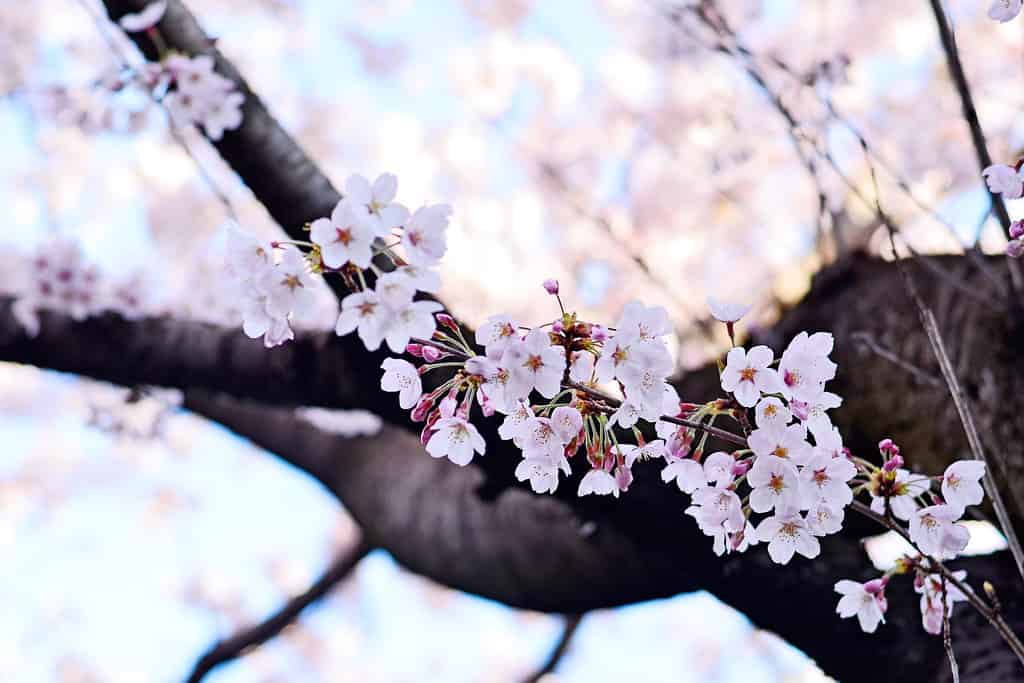
If you are looking for a medium-sized flowering tree, you’ll be amazed that the Yoshino cherry is adaptable to many types of soil. It is also quite heat tolerant and makes for a real showstopping specimen for your landscape.
Looking for practical tips to help you grow Yoshino cherry trees confidently? Read on further as we walk you through the best possible ways to care for these lovely outdoor trees.
What is the Ideal Soil Type for Yoshino Cherry Trees?
Isn’t it comforting to know that this delightful tree is actually quite adaptable to various soil conditions? A rich, loamy soil that can retain sufficient moisture is the most ideal. However, be sure to refrain from overwatering the soil as this may eventually cause damage to the tree.
Moreover, the ideal pH level should be around 6.5 to 7 (slightly acidic to neutral). To prepare the tree for the summer, the use of mulch (preferably hardwood organic mulch) around its base can help retain adequate moisture in order to prevent it from drying out.
What is the Best Lighting Condition?
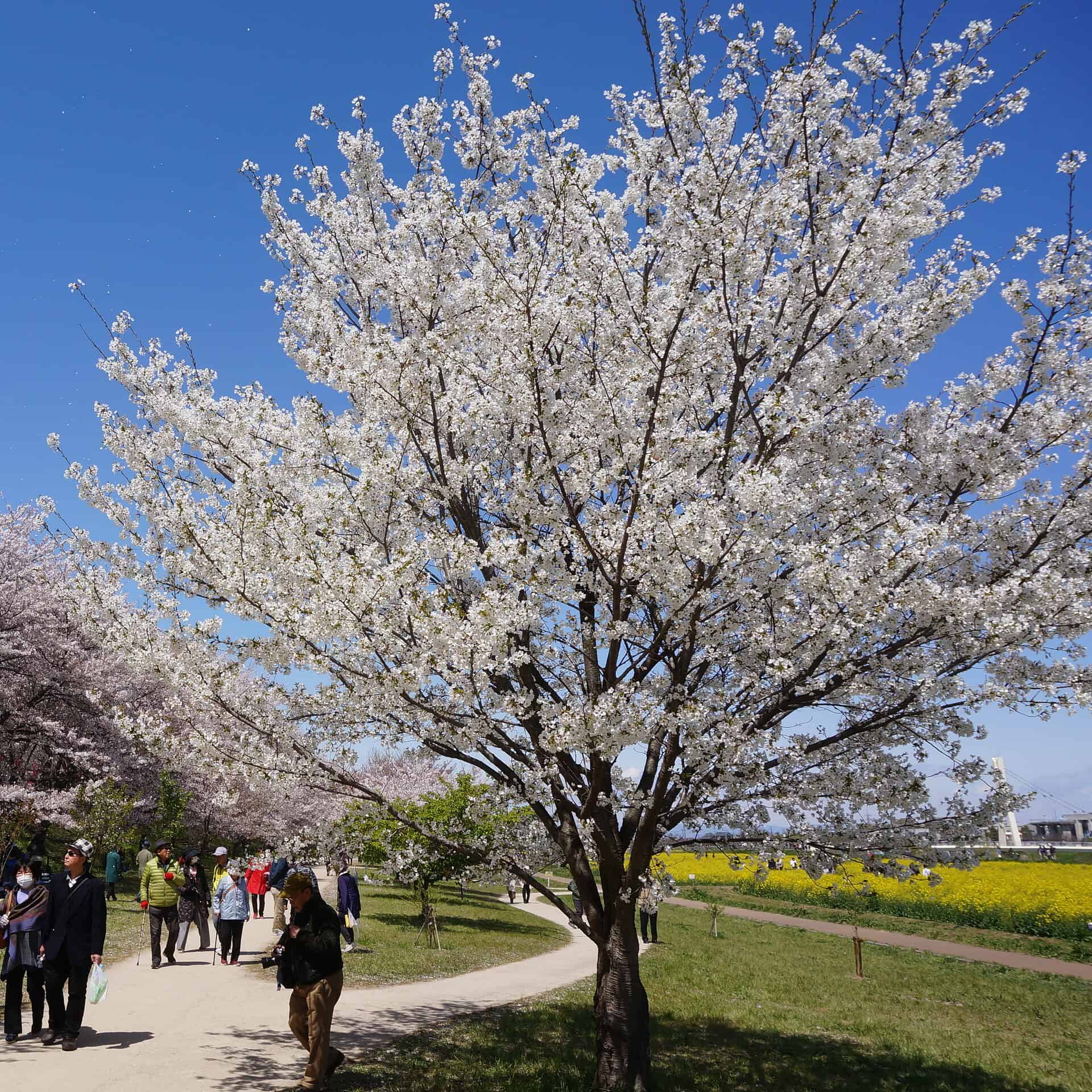
When it comes to these beautiful trees, full sunlight exposure is the most ideal. They can also thrive under partial shade conditions albeit a minimum of four to six hours of direct, unfiltered sun should be given especially if you wish to see the tree bloom abundantly.
Giving the Yoshino cherry tree sufficient light is not only favorable to Yoshino cherry blossoms but can also benefit the entire tree!
How Much Water Is Needed?
For the Yoshino flowering cheery tree, approximately one (1) gallon of water should be given in the first one to two years after planting or when you notice that the top two inches of the soil already feels dry.
Once their roots have become fully established, watering can be given at a minimum, or when you notice that the tree is already blooming well. The most ideal schedule is once every two weeks in the summer season and once every three to four weeks during the fall and spring.
Temperature and Humidity Requirements
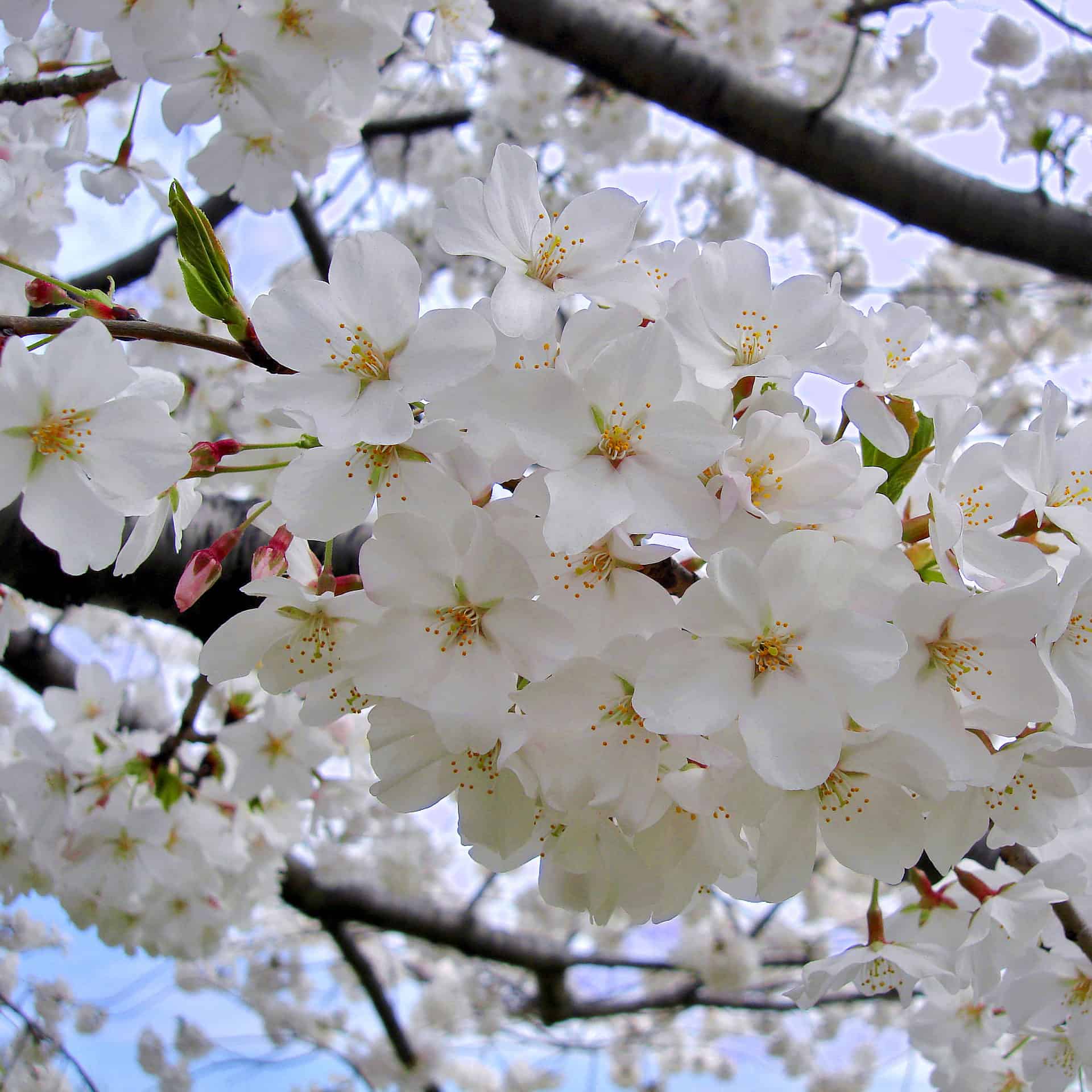
The Yoshino cherry trees are often seen thriving well on USDA Hardiness Zones 5-8 (-28°C – 26°C) to (-12°C to -9 °C). You’ll also be delighted to know that they are the coldest and heat tolerant among other flowering cherry trees, hence they may be grown in areas with a broader temperature regime.
Note: In regions where the temperature tends to be relatively higher, the tree should be grown in areas that receive ample amounts of shade to avoid discoloration of their leaves and damage to their gorgeous blooms.
Fertilizer Needs of Yoshino Cherry Trees
You will have to wait until two years after planting before you could apply a balanced NPK fertilizer (e.g. 10-10-10), particularly in the early spring.
If you wish to fertilize the tree organically, you may need to fill the soil with some compost and later top-dress, allowing the nutrients to seep through the soil.
If you can find fertilizers that are specific to Yoshino cherry trees, much better. But avoid using cheaper ones as they tend to damage both the tree and the soil in the long run.
When is Pruning Usually Done?
Yoshino flowering cherry trees grow at about one to two feet per year. Pruning is not strictly required but if you wish to control the growth of your outdoor plants, you may prune the tree from time to time. It is recommended to prune the Yoshino from autumn or early summer.
You may also want to prune the plant a few weeks before the onset of winter.
Pro tip: Prioritize pruning the decaying and rather old parts of the tree. Avoid cutting more than a third of the tree in one year and always use a sharp and sterile pruning knife or shears.
-
$35.99Sold By: Succulent Oasis
In stock
Mature Succulent Plant Echeveria ‘Hortencia’ Hybrid.
Rated 4.84 out of 5 based on 352 customer ratings00Sold By: Succulent Oasis -
$5.99Sold By: BubbleBlooms
In stock
Red Peperomia caperata, Red Emerald Ripple, Frost, Platinum, limited, in a 2 inch pot super cute
Only 991 available and it’s in 1 people’s basketRated 4.81 out of 5 based on 279 customer ratings01Sold By: BubbleBlooms -
$20.00Sold By: Soul Peace Gardens
In stock
Soul Peace Bundle – Baby Toes Succulent – Fenestraria Rhopalophylla
Only 1 available and it’s in 1 people’s basketSold By: Soul Peace Gardens
How to Propagate the Yoshino Cherry Tree?
A Yoshino flowering cherry tree is often propagated through grafting, air layering, and softwood cuttings. However, the most commonly used method is air layering since it is the most simple and economical.
With air layering, you will need some plastic wrap, a sharp knife, a handful of sphagnum moss, and grafting tape. The steps for air layering are outlined as follows:
Create a cincture or cuts around a branch that is at least 3/8 inches thick and 2 inches apart. Remove the bark from the branch down to the cambium, interrupting your cutting from receiving nutrients or water.
Moisten a handful of sphagnum moss and wrap it around the bare wood. Afterward, cover the area with plastic wrap. Be sure to tape both ends so that water cannot enter and no moisture will escape.
At about four to six months, a full root ball will develop. This is evident with the roots forming inside the covered area. Once this is visible, plant it immediately.
Yoshino Cherry Tree Varieties
Aside from Yoshino, there are other popular Japanese flowering cherry trees that can provide you with an equally attractive set of foliage and a lovely cluster of blossoms that is surely worth your while!
Fugenzo Cherry (Prunus serrulata ‘Fugenzo’)
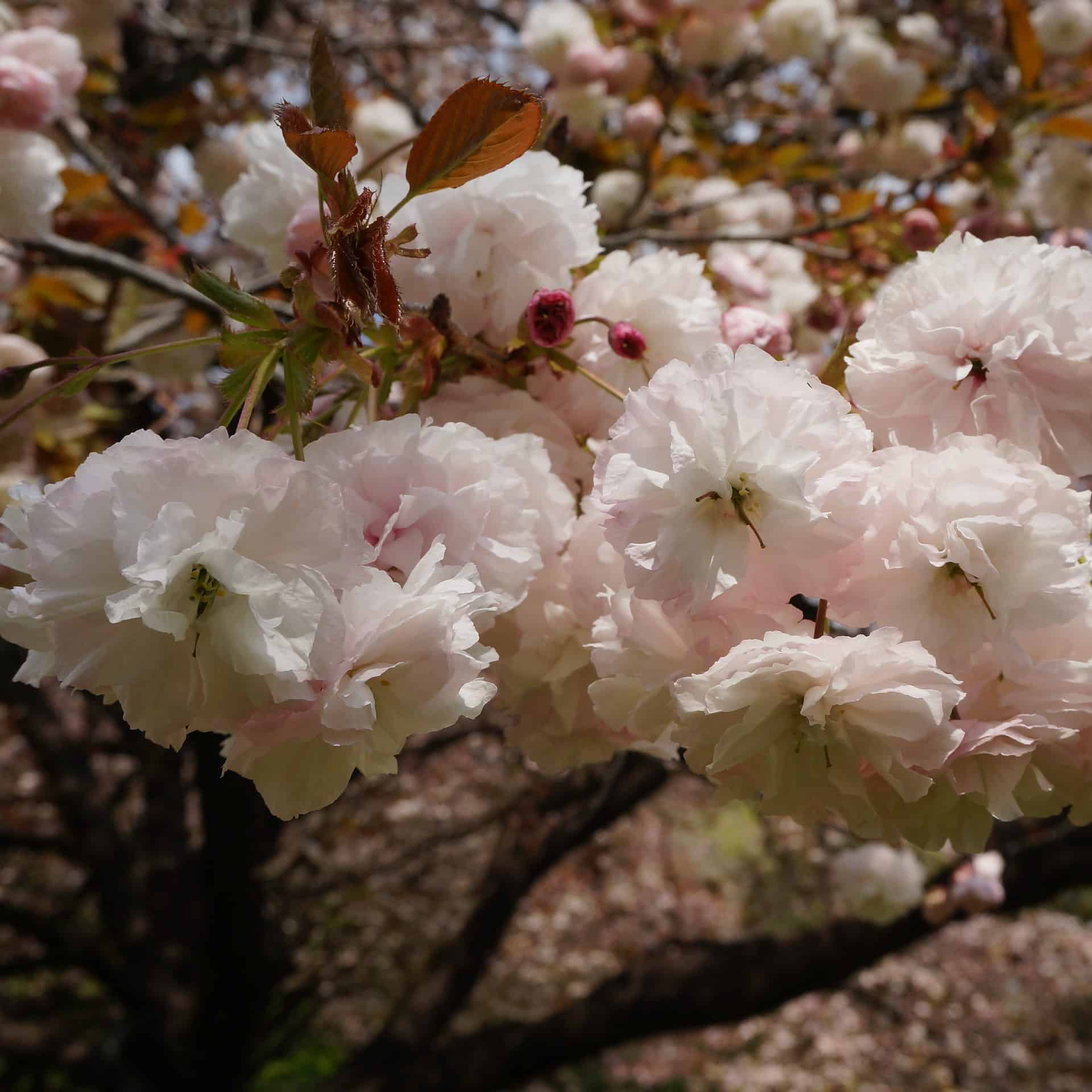
Among the cherry trees taking part in cherry blossom festivals, the Fugenzo cherry has a beautiful set of white flowers that can gradually turn pink. It has a mature height of about 20-30 feet tall and wide. Fugenzo is considered one of the oldest cultivated cherry trees in Japan.
Autumn Flowering Cherry (Prunus subhirtella var. autumnalis)
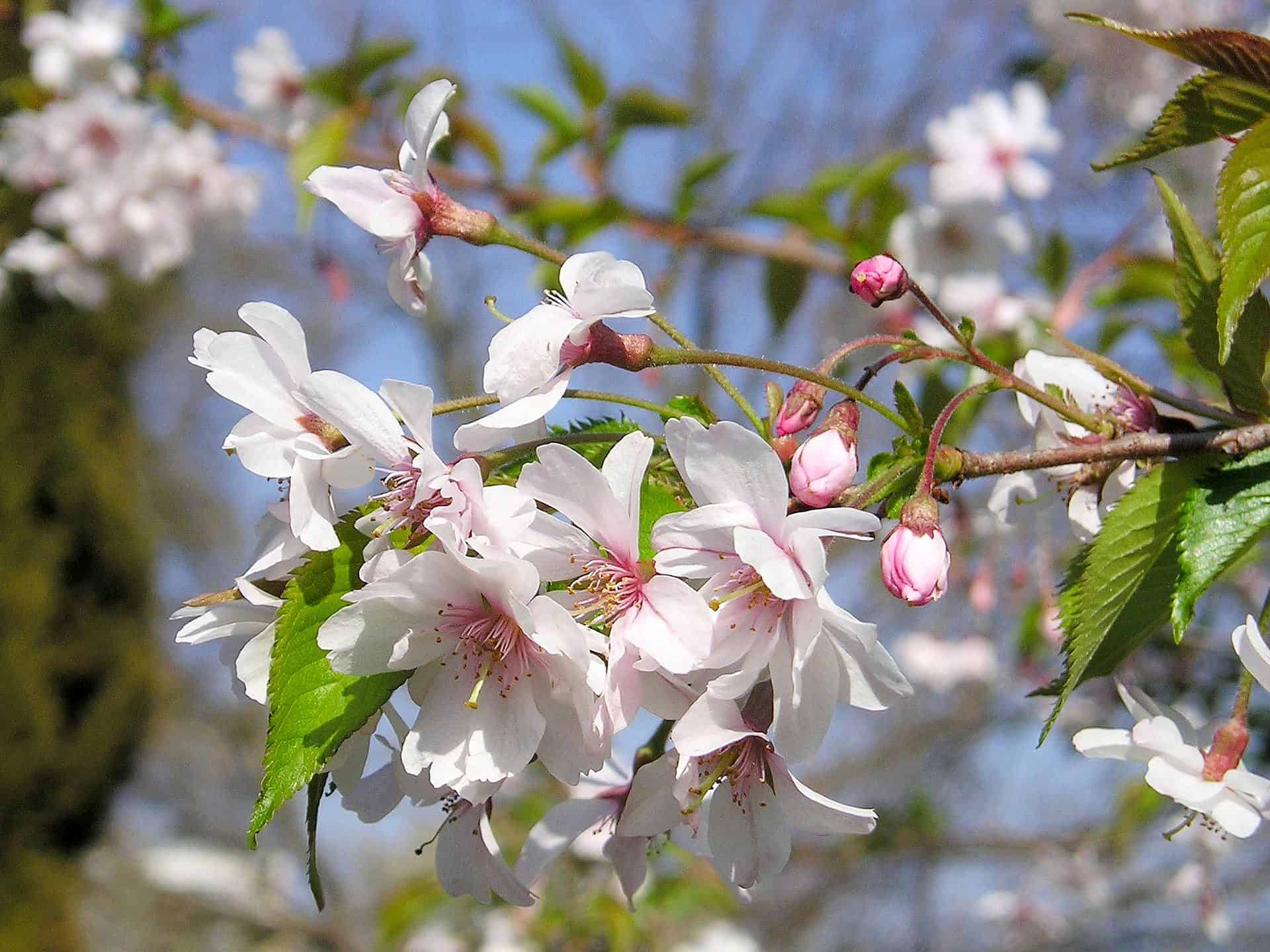
The Autumn flowering cherry tree has an upright growth habit that spreads up to 20 feet. In the fall, during warm periods, and winter months, the buds will open sporadically and then fully flower at the onset of spring. This nostalgic beauty can thrive at USDA hardiness zones 5.
Takesimensis Cherry (Prunus takesimensis)
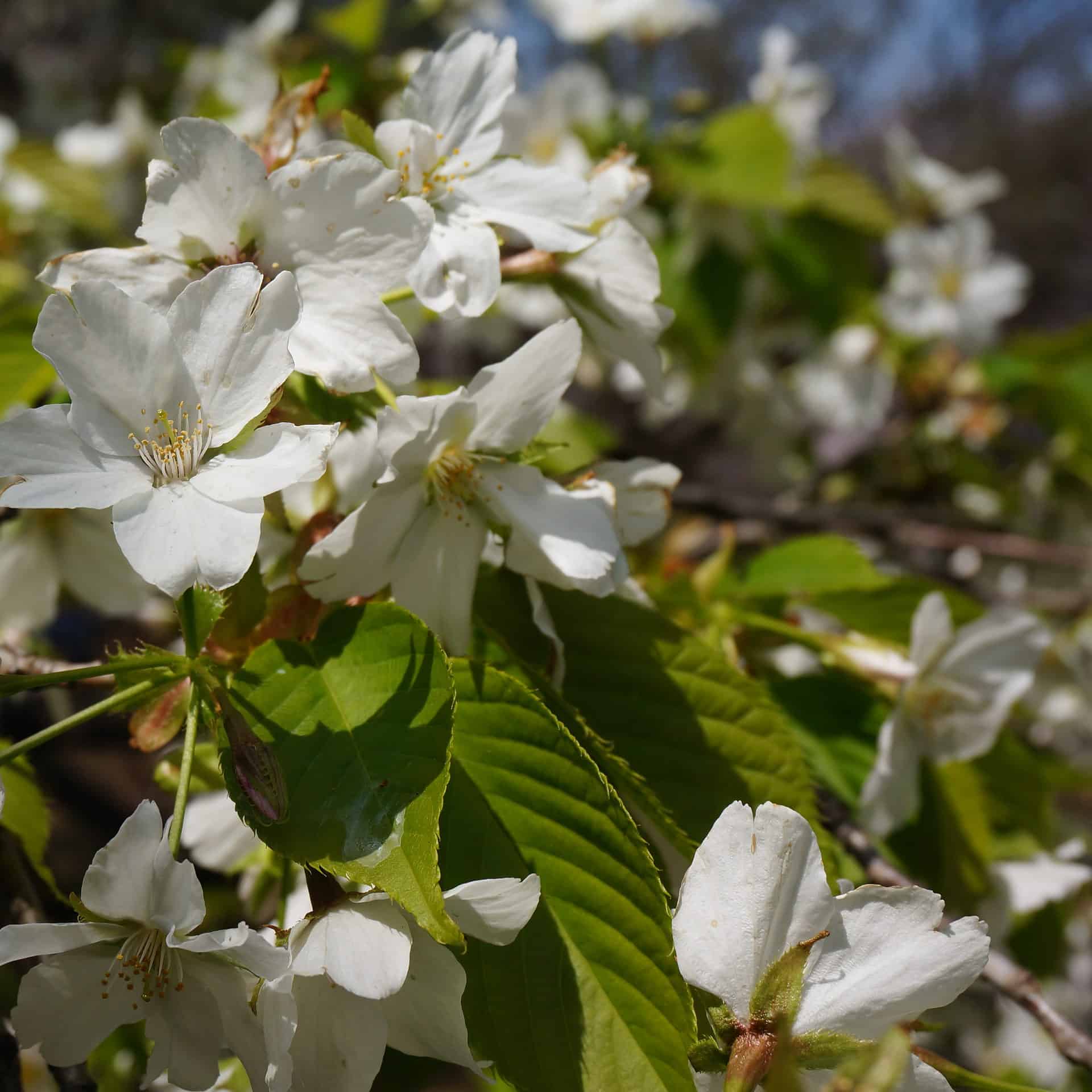
A bubbly-looking cherry blossom tree, the Takesimensis have an upright growth habit that can reach a height of 30-40 feet tall. It has large clusters of white flowers having short pedicels. They are known to thrive in wet locations and therefore tolerant to excessive moisture.
The Takesimensi are hardy to USDA zone 6.
Yoshino Tree Common Diseases and Pests
Any growers should pay attention to some of the symptoms that are being shown by Yoshino cherry trees, as they may easily become susceptible to many pests and diseases. Because of this, the tree has been labeled as ‘short-lived’.
However, with proper care, Yoshino can easily reward you with spectacular scenery in your garden that is worth maintaining.
One of the most damaging insect pests that could affect your cherry trees is the Peachtree borers. As preventive measures, it is important to keep the tree vigorous and well-monitored.
Other pests like scale insects, leaf-eating caterpillars, spider mites, and aphids can be easily controlled by the use of horticultural oil such as neem oil, insecticidal soap, and occasional blasting of water to remove them from the surface of the tree.
Pro tip: Make use of insecticides as a last resort, as they may also damage the foliage of your cherry trees. Be sure to provide adequate irrigation and remove immediately any plant parts (disease branches) that could harbor and cause the spread of infections.
Prune infected branches and foliage that may have resulted from diseases such as fireblight, powdery mildew, leaf spot, and other fungal diseases. Have an expert take a look at your tree should any symptoms occur and worsen.
Frequently Asked Questions
Between March to April, the Yoshino cherry produces an amazing profusion of white-pink flowers – where each blossom has five petals that open pale pink and mature into white, usually in clusters of five to six.
This beautiful tree can easily outlive you. With great care, Yoshino cherry trees live from 80 to 100 years.
Among the types of Japanese flowering cherries, Autumn cherry trees develop a small cluster of flowers twice a year.
A Yoshino cherry tree typically takes about 15 to 20 years to reach its full size, which can vary but generally ranges from 30 to 50 feet in height.
Yoshino cherry trees thrive in regions with temperate climates, characterized by distinct seasons. They grow best in well-draining soil with full sunlight exposure. These trees are often found in locations with mild winters and moderate rainfall, such as parts of North America, Europe, and Asia.
Yes, pruning is recommended for Yoshino cherry trees. Regular pruning helps maintain their shape, remove dead or diseased branches, and improve air circulation, leading to healthier growth and better flowering.
Whether you want to buy, sell, or simply reach out to other plant enthusiasts, Plantly is the right place to be!
-
$15.99Sold By: Succulent Oasis
In stock
Succulent Plant Small Schwantesia Borcherdsii.
Only 10 available and it’s in 1 people’s basketRated 4.84 out of 5 based on 352 customer ratings00Sold By: Succulent Oasis -
Free Shipping$9.99 – $18.99Sold By: Thor's Backyard Nursery
In stock (can be backordered)
Azalea Gerbing (White) | HUGE BULK SALE!!! (Read Description)
Rated 4.89 out of 5 based on 53 customer ratings00Sold By: Thor's Backyard Nursery -
$15.00Sold By: Grow with Sass
In stock
Skull pot with succulent
Rated 5.00 out of 5 based on 19 customer ratings00Sold By: Grow with Sass -
$28.99Sold By: Succulent Oasis
$35.00In stock
Succulent Plant Mature Sedum Sun Sparkler
Rated 4.84 out of 5 based on 352 customer ratings00Sold By: Succulent Oasis

